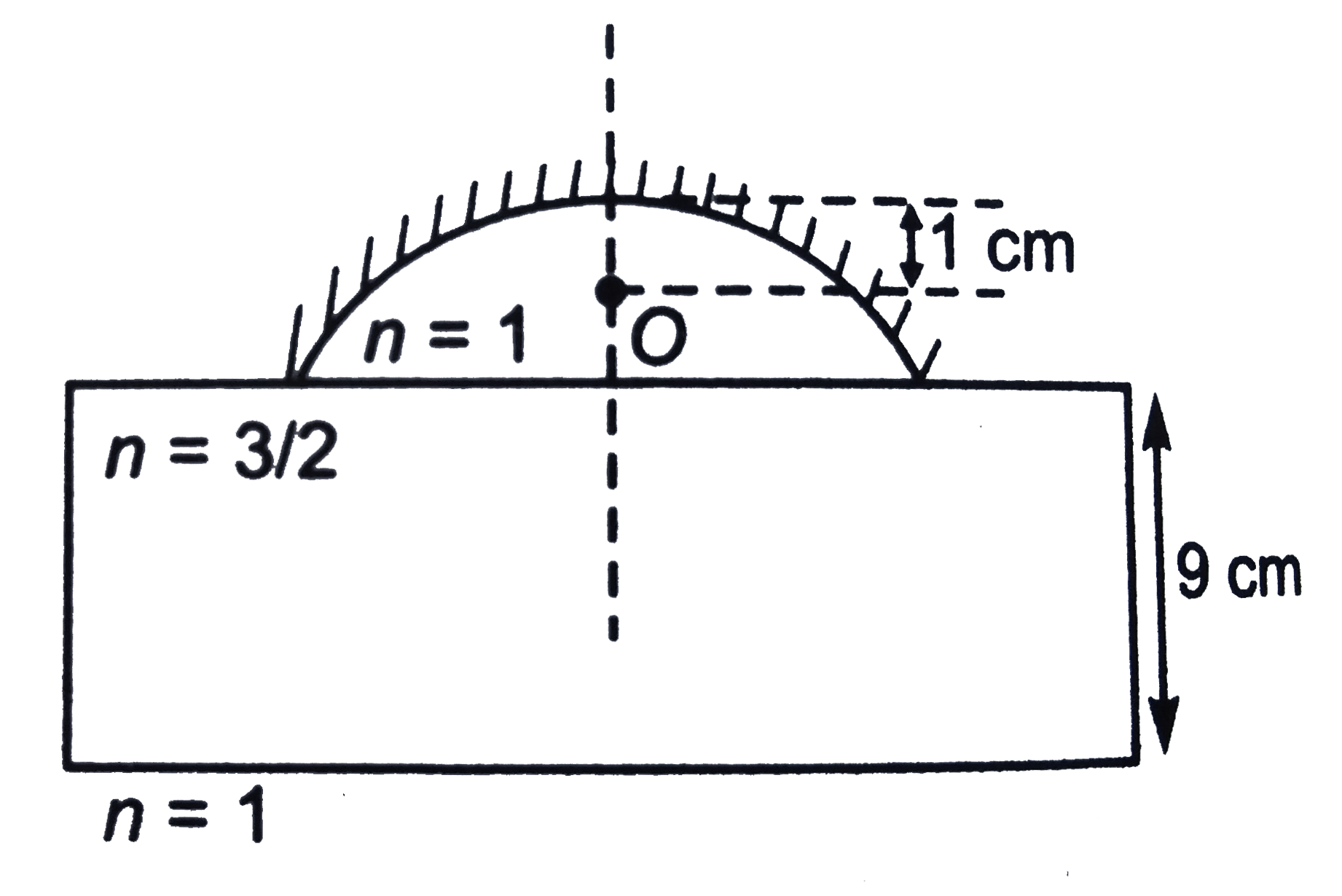A concave mirror can be used for close make up or shaving glass. ______
Step-by-Step Solution:
1. Understanding the Concave Mirror: A concave mirror is a spherical mirror that is curved inward. It has a reflective surface that can focus light to a point.
2. Position of the Object: For close makeup or shaving, the object (the face) is placed between the focus (F) and the pole (P) of the concave mirror. This positioning is crucial as it determines the type of image formed.
3. Ray Diagram: To visualize how the image is formed, we can draw a ray diagram:
- Draw the concave mirror with its principal axis, pole (P), focus (F), and center of curvature (C).
- Place the object (the face) between the focus and the pole.
- Draw two rays from the top of the object:
- The first ray travels parallel to the principal axis and reflects through the focus.
- The second ray travels through the focus and reflects parallel to the principal axis.
4. Image Formation: The reflected rays diverge, and if we extend them backward, they appear to meet at a point behind the mirror. This point is where the virtual image is formed.
5. Characteristics of the Image: The image formed by the concave mirror in this scenario is:
- Virtual: It cannot be projected on a screen.
- Erect: The image is oriented in the same direction as the object.
- Enlarged: The size of the image is larger than the actual object, which is ideal for close makeup or shaving.
6. Conclusion: Therefore, a concave mirror is indeed suitable for close makeup or shaving because it provides an enlarged, erect, and virtual image of the face.
---
- Draw the concave mirror with its principal axis, pole (P), focus (F), and center of curvature (C).
- Place the object (the face) between the focus and the pole.
- Draw two rays from the top of the object:
- The first ray travels parallel to the principal axis and reflects through the focus.
- The second ray travels through the focus and reflects parallel to the principal axis.
- Virtual: It cannot be projected on a screen.
- Erect: The image is oriented in the same direction as the object.
- Enlarged: The size of the image is larger than the actual object, which is ideal for close makeup or shaving.
Topper's Solved these Questions
- BOOK - ICSECHAPTER - LIGHT ENERGYEXERCISE - EXERCISE 5.2 (Objective Type Questions) D. Tick the most appropriate answer.5videos
LIGHT ENERGY
- BOOK - ICSECHAPTER - LIGHT ENERGYEXERCISE - EXERCISE 5.2 (Objective Type Questions) E. Match the statements in column A, with those in Column B.1videos
LIGHT ENERGY
- BOOK - ICSECHAPTER - LIGHT ENERGYEXERCISE - EXERCISE 5.2 (Objective Type Questions) B-Statements given below are inccorect. Write the correct statements.5videos
LIGHT ENERGY
- BOOK - ICSECHAPTER - HEAT TRANSFER EXERCISE - Picture Study2videos
HEAT TRANSFER
- BOOK - ICSECHAPTER - MATTER EXERCISE - THEME ASSIGNMENT25videos
MATTER
Similar Questions
A concave mirror cannot from
View SolutionA concave can be used to obtain a real and magnified image.
View SolutionWe use concave mirrors as rear view mirrors.
View SolutionConcave mirror is called a converging mirror
View SolutionA concave mirror of focal length 2cm is placed on a glass slab as shown in the figure. The image of point object O formed due to reflection at mirror and then refraction by the slab
 View Solution
View SolutionWhat type of mirror is most suitable as shaving glass?
View SolutionDraw a concave mirror and a convex mirror and mark the reflecting surfaces on both.
View SolutionAssertion : A convex mirror can never make a real image
Reason : For all real objects image formed by a convex mirror is virtualView SolutionFor an object placed at a distance 20 cm from a concave mirror, the image is formed at the same position. What is the focal length of the mirror?
View SolutionAn object is placed at a distance of 30 cm from a concave mirror and its real image is formed at a distance of 30 cm from the mirror. The focal length of the mirror is
View Solution

